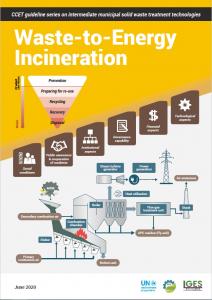According to the World Bank (2018), global annual waste generation is expected to jump from 2.01billion tonnes in 2016 to 3.40 billion tonnes over the next 30 years, and this trend is especially true in developing countries in Asia and Africa. This suggests that there has been very little success in reversing the trend of the increased generation of MSW, meaning that the world has continued on its course to becoming one “throwaway society”.
While WtE incineration is one of the options for waste volume reduction and energy recovery, only a circular economy will ensure the decline of per capita waste generation and offer a long-term solution to the global waste problem. WtE incineration is just one potential element out of many in a functioning MSW system. WtE incineration plants alone cannot solve existing waste problems, and decisions on selecting WtE incineration as an appropriate technology should be made on the basis of an integrated MSW management plan in the respective city or country.
This guideline focuses on waste-to-energy (WtE) incineration technology for municipal solid waste (MSW), mainly household waste and commercial waste, in urban areas of Asian developing countries. The guideline aims to assist decisionmakers and policymakers at the national and city levels, residents and other stakeholders who are in search of additional knowledge and information that will help them to form a clear picture of what WtE incineration entails. The guideline provides a holistic understanding about WtE incineration technology, and proposes key evaluation criteria and a pre-check flow in the MSW decision-making process.

